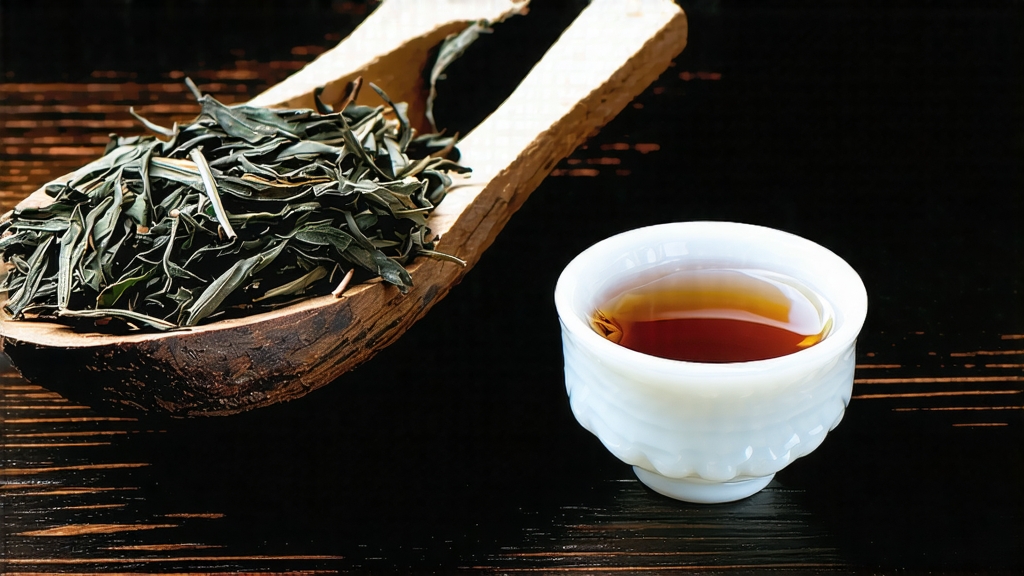
Long before Assam, Ceylon, or Earl Grey entered the global lexicon, the first fully oxidised leaf that Europe would christen “black tea” was born in the rugged Wuyi massif of northern Fujian. Locals simply called it zhengshan xiaozhong—“small-leaf from the original mountain.” Foreign merchants shortened the name to Lapsang Souchong, and through 17th-century clipper ships the dark, smoky cargo sailed into Amsterdam and London, forever changing the planet’s palate. Today, whether you meet it in a Parisian Marais tearoom or a Brooklyn specialty café, the same tea still carries the aroma of pine resin and camphor that once captivated the courts of the Sun King.
History: from Ming border guards to Victorian breakfast tables
Legend places the origin in 1568, when a passing army camped in Tongmu village during the late spring harvest. To dry the plucked leaves before they spoiled, farmers spread them over pinewood fires; the resulting copper-coloured liquor impressed the soldiers so much that the process was repeated the next year, then commercialised. By 1604 Dutch traders had substituted Lapsang for the green teas that spoiled on long ocean crossings, and by 1662 Catherine of Braganza’s dowry chests made it fashionable at the English court. The East India Company listed it as “bohea,” a corruption of “Wuyi,” and for two centuries it ranked among the most expensive teas at auction, outpricing even first-flush Darjeeling in today’s currency.
Terroir: why only Tongmu can be “original”
The Chinese government now restricts the geographical indication to 670 km² of cloud-locked canyons where the Min River cuts through granite cliffs. At 600–1 200 m elevation, morning mist diffuses sunlight into a soft, silver glow; the humidity hovers at 85 %, slowing leaf growth and concentrating amino acids. The soil is a stony laterite rich in iron and magnesium, contributing a subtle mineral sweetness that balances smoke. Seed-grown xiaozhong cultivars—never clonal bushes—send roots deep into fissures, drawing up aromatics that no greenhouse replication has matched.
Two faces of the same leaf: smoked vs. unsmoked
International consumers usually picture the assertive campfire nose, yet within Tongmu itself connoisseurs prize a second, increasingly rare style called “unsmoked xiaozhong.” Both versions begin identically: one bud and the first two leaves picked in late April when the dew still smells of wild azalea. The divergence occurs at the final drying stage.
Craft: seven steps that turn green into midnight red
- Withering: baskets of fresh leaf rest on bamboo racks in the second-floor loft of 300-year-old wooden houses. Below, gentle heat from pine emblems raises the temperature to 30 °C; the leaf loses 60 % moisture over eight hours, edges turning crimson.
- Rolling: once the lamina feels leathery, craftsmen roll it on rattan mats, breaking cell walls and initiating oxidation without the aggressive maceration used in CTC teas.
- Fermentation: the twisted leaf is piled in cedar-lined trays and covered with wet calico. For three hours enzymes convert catechins into theaflavins, colouring the leaf a uniform mahogany.
- Pan-firing: a quick 200 °C tumble in iron woks arrests oxidation, fixing the red-black hue and creating the first layer of dried-fruit aroma.
- Smoking (optional): the leaf is spread on brass screens suspended 70 cm above a slow fire of local Masson pine and a pinch of camphor root. For eight hours the tea inhales cool smoke; craftsmen add fresh wood every 30 minutes, judging by ear—the crackle must remain gentle, never furious.
- Second rolling: a lighter kneading re-tightens strips, helping them withstand months of travel.
- Final drying: low-temperature ovens reduce moisture to 4 %, locking in both sweetness and smoke.
Grades: from pine-tip needles to golden crab claw
Tongmu insiders grade by strip fineness and proportion of golden tips. Pekoe (P) contains the most buds, yielding a creamy, almost cacao-like cup with only a whisper of smoke. Orange Pekoe (OP) offers balanced briskness, while Broken Orange